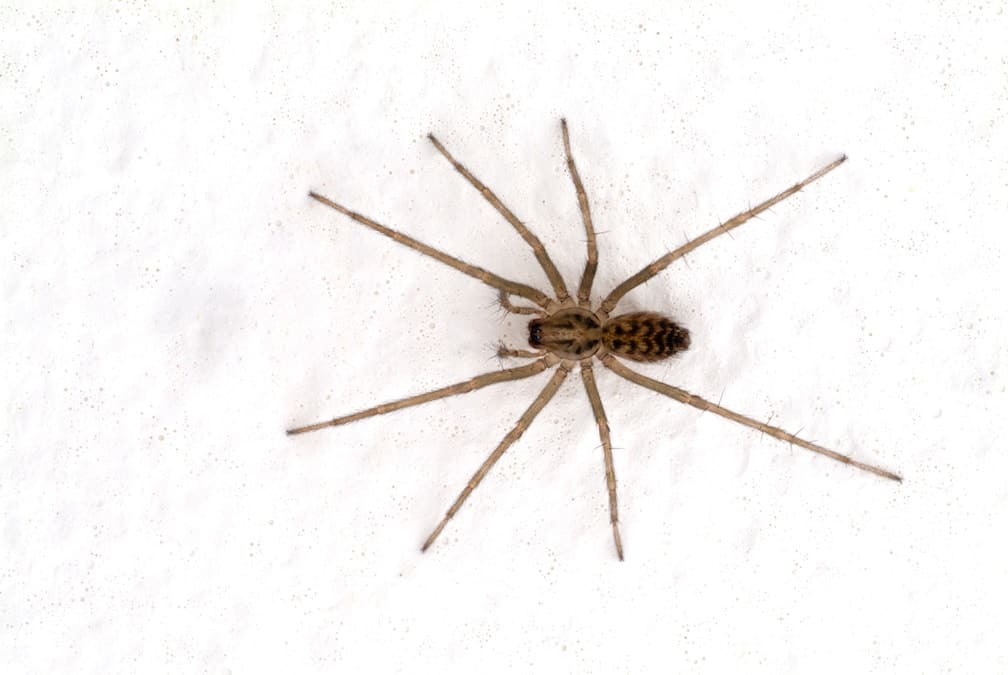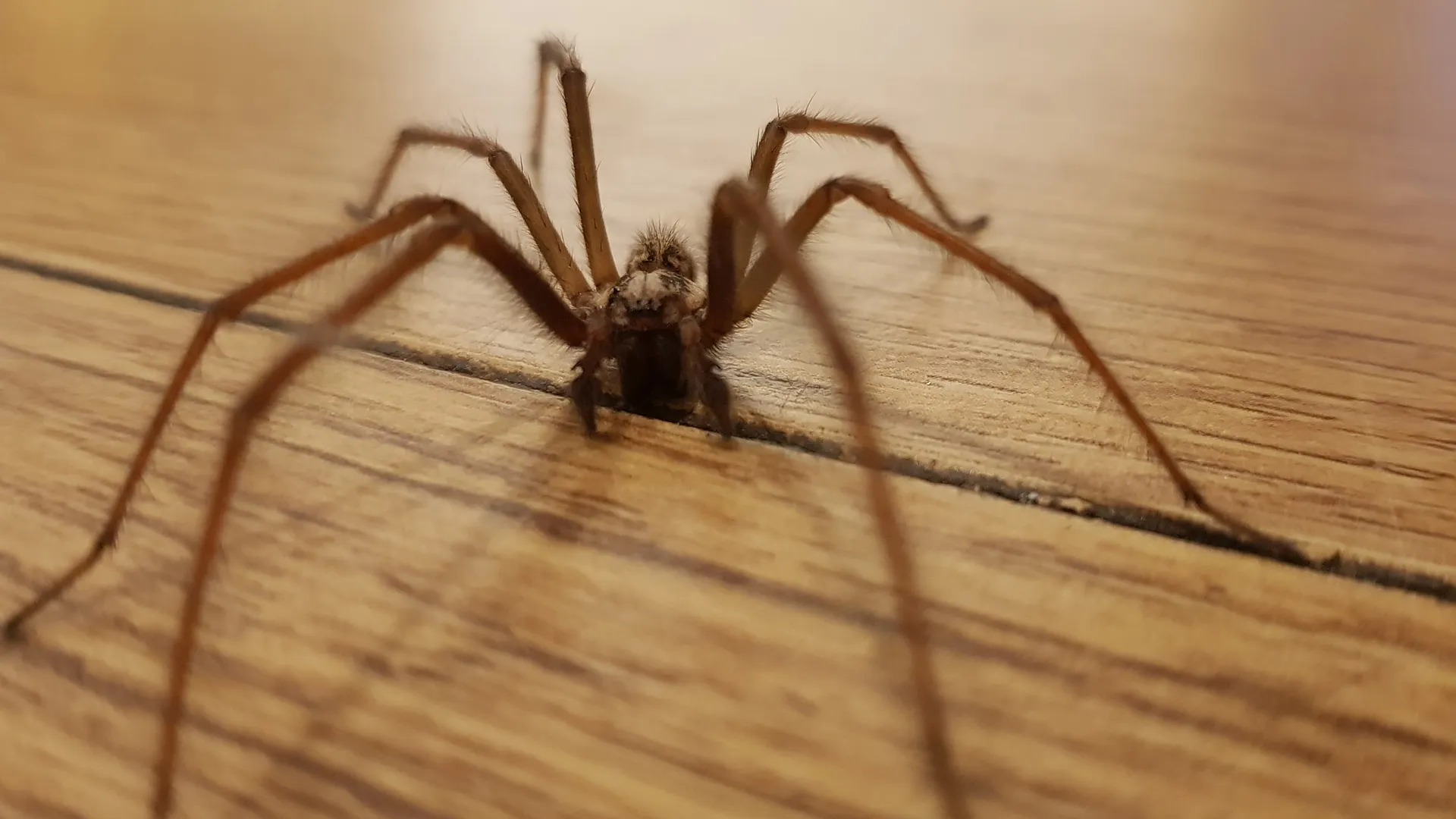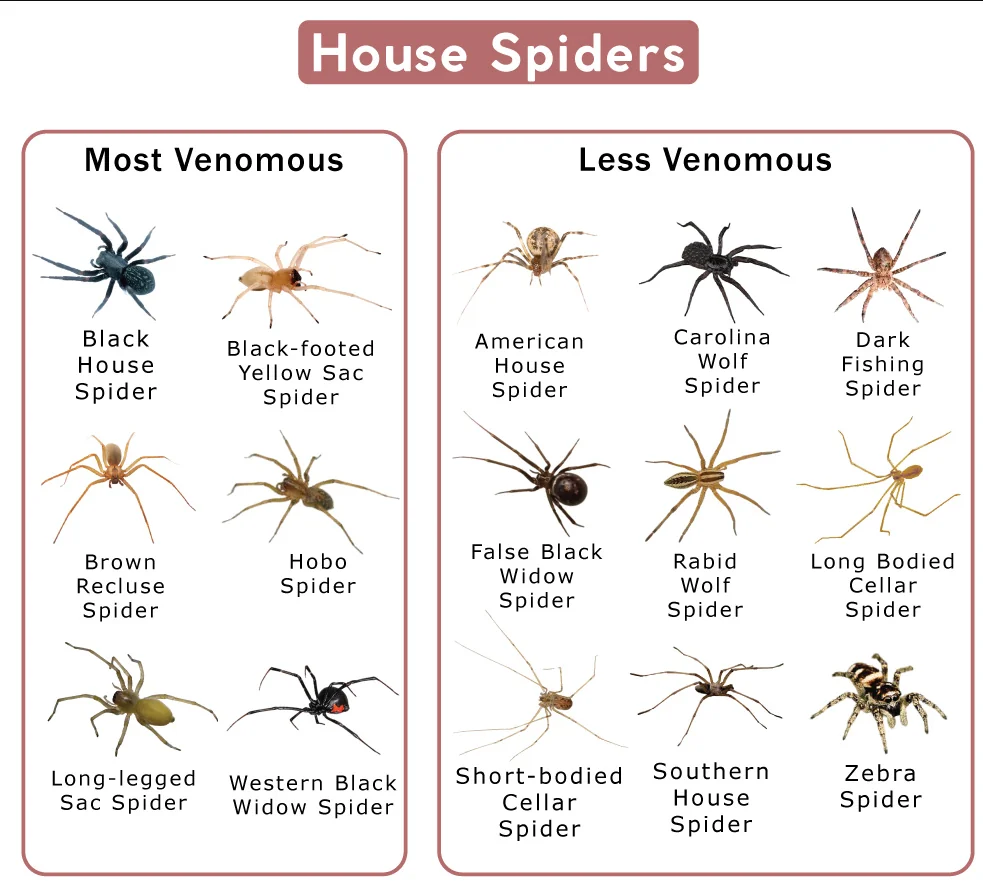Spider Treatments in Florida:
Exterminator Services for Bonita Springs, Naples, and Marco Island
Florida’s Gulf Coast provides an inviting climate for both residents and tourists, thanks to its year-round sunshine, balmy evenings, and scenic coastal living. Yet these subtropical conditions also offer ideal habitats for various spider species. While many arachnids help manage insect populations, too many spiders in or around your home or business can cause discomfort, fear, or occasional venom concerns. In neighborhoods such as Bonita Springs, Naples, and Marco Island, it is important to know when it is time to call a spider exterminator. This service page clarifies why spiders thrive along Florida’s southwest coast, how to spot potential spider issues, and which spider treatments effectively keep these creatures from overwhelming your interior or exterior spaces.
Florida’s Climate and Spider Populations

- Mild Winters
Much of the country sees frigid winters that temporarily reduce spider activity, forcing many arachnids into a dormant phase. In southwestern Florida, however, cold snaps tend to be short-lived, if they occur at all. This lack of extended freezing means many spider species remain active and reproducing nearly throughout the year, increasing the chances of noticeable spider presence around properties. - High Humidity and Periodic Rain
Warm, humid air fosters abundant insect populations—spiders’ main prey. Combine that with occasional downpours, and arthropods of all types flourish. Since spiders seek areas where insect prey is plentiful, Florida’s environment ensures a steady supply of potential meals, making it easier for spiders to multiply around homes, gardens, or commercial landscaping. - Coastal and Suburban Development
Regions like Bonita Springs, Naples, and Marco Island blend residential complexes, bustling urban districts, and scenic waterfronts. New construction or landscaping can inadvertently disturb spider habitats, pushing them onto nearby properties. Alternatively, certain species might find modern, landscaped yards ideal for setting up webs or hideouts if consistent pest control and yard maintenance are not in place. - Minimal Seasonal Dormancy
In more temperate climates, the presence of extended chilly periods causes spiders to slow down significantly. Florida’s moderate climate rarely enforces such a slowdown, letting many spider species continue producing egg sacs and building webs practically year-round, especially in garages, sheds, or under eaves. - Year-Round Insect Activity
Because insect populations do not undergo a major winter lull, spiders stay well-fed. The constant availability of flies, mosquitoes, and other insects near water sources, lights, or neglected corners of a property means spiders see no reason to relocate, often leading to consistent or growing numbers around your home or workplace.
Common Spiders in Florida’s Southwest
- Orb-Weaver Spiders
Known for spinning large, circular webs, orb-weavers include species such as the banana spider (golden silk orb-weaver). They generally present no direct danger to humans but can be startling because of their size and the broad webs they form across open areas, walkways, or between trees. - Wolf Spiders
Robust, hairy, and swift, wolf spiders roam ground-level areas hunting insects rather than spinning webs to trap them. They often turn up in garages or indoor rooms if an exterior door is left open. Large wolf spiders may cause alarm when encountered, but they typically avoid humans, biting only if cornered or threatened. - Widow Spiders (Black or Brown)
Black widows have shiny black bodies with a red hourglass marking on the underside of their abdomen, while brown widows feature a lighter coloration with an orange or yellowish hourglass. These spiders produce potent venom, so their presence near living spaces can be concerning. They hide under outdoor furniture, in cluttered sheds, or in eaves with messy, strong webs. - Brown Recluse Spiders
Sightings in southwestern Florida do happen, though these spiders are more widespread in other parts of the country. Notable for the violin-shaped mark on their cephalothorax, brown recluses can deliver a necrotic bite requiring medical attention. Infestations are relatively uncommon, but property owners remain watchful if they discover suspicious brown spiders with fine dorsal markings. - House Spiders
Smaller, brownish spiders that spin irregular webs in corners, behind pictures, or under furniture. Although these generally do not pose a health threat, major populations can leave webs around ceilings and windows, producing a neglected or unsanitary appearance if left unmanaged.
Why Spider Treatments May Be Necessary
- Excessive Web Presence
While some spiders are beneficial, too many in living spaces can become a nuisance. Dense webs strung across porches or in bathrooms hamper daily routines and may unnerve residents or visitors. - Potential Venom Concerns
Spiders like black widows or brown widows can deliver painful bites with possible health repercussions, especially in households with small children, pets, or individuals with compromised immunity. Eradicating them from high-traffic areas is frequently a priority. - Allergic Reactions and Fear
Many people experience arachnophobia or heightened anxiety around spiders. Some spider bites or webs can trigger allergic responses in sensitive individuals, heightening the call for thorough spider treatments. - Commercial Reputation
In businesses, especially hospitality or retail, spider sightings can drive away customers. A neat and spider-free environment reassures guests and supports a professional image. Swift removal ensures that webs do not mar the building’s aesthetic.

Early Warnings of Spider Activity
- Frequent Web Sightings
Seeing multiple webs across eaves, corners, or by windows may point to a rising spider population. Also, discovering egg sacs within these webs suggests a new generation is in the works. - Unusual Spider Variations
While smaller house spiders are ordinary, encountering venomous black widows or large wolf spiders can indicate conducive conditions for more roaches or insects that feed them. This might also hint at broader pest problems that support bigger spider populations. - Spider Bites
Red, itchy bumps or welts, sometimes in a cluster, occasionally occur if certain spiders roam sleeping or seating areas. Though not definitive evidence of a large infestation, repeated bites encourage an immediate property check. - Musty or Neglected Spaces
Spiders flourish in quiet, dim corners—like storerooms or rarely accessed attics. If you rarely clean or reorganize these areas, they might harbor webs and spiders. Regular decluttering and occasional deep cleaning can reveal hidden pockets of spider activity.
The Exterminator’s Approach to Spider Treatments
- Comprehensive Inspection
A spider exterminator first examines both indoor and outdoor sections of your property. Checking roof eaves, behind appliances, yard vegetation, and under furniture locates webs or egg sacs. Identifying the spider species helps refine treatment methods. - Targeted Product Application
Residual insecticides may be applied along baseboards, in corners, or near door thresholds, affecting spiders crossing these zones. Some professionals also deploy insect growth regulators to limit spider egg development and reduce insect prey, indirectly decreasing spider populations. - De-Webbing
Physically removing webs and egg sacs disrupts spider breeding cycles. Cobwebs in eaves, garage corners, or behind seldom-moved items can be vacuumed or carefully brushed away, diminishing the immediate spider population and discouraging re-webbing in the same spots. - Exterior Perimeter Control
Many spiders invade from yards or gardens. Treating yard edges, trimming shrubbery away from walls, and managing exterior lighting (opting for yellow “bug lights” that attract fewer insects) can curtail the insect prey that draws spiders near the building. Sealing cracks or gaps also denies spiders easy entry. - Integrated Pest Management
Because spiders survive by eating insects, controlling insect populations helps reduce spider numbers in the long run. If roaches, mosquitoes, or flies abound, spiders will remain or multiply. A combined approach addresses the property’s overall pest environment. - Follow-Up
Some species produce egg sacs that hatch weeks later, reintroducing a new wave of spiders if not caught. Scheduling a follow-up ensures that newly hatched spiders or overlooked webs receive prompt removal.
Service Areas: Bonita Springs, Naples, and Marco Island
Our spider treatments and exterminator services target residences and businesses throughout Bonita Springs, Naples, and Marco Island:
- Bonita Springs: A coastal town blending serene neighborhoods with natural preserves, Bonita Springs is no stranger to abundant insect life that can sustain spider populations. Maintaining a spider-free setting here sometimes means persistent yard management and attention to roof eaves or balconies.
- Naples: Known for upscale communities and a bustling dining scene, Naples faces consistent foot traffic and new building expansions that can inadvertently displace spiders. Restaurants, hotels, and homeowners all rely on consistent pest control to keep webs from marring the city’s polished reputation.
- Marco Island: A beloved tourist destination with multiple condos, rentals, and commercial properties, Marco Island sees frequent occupant turnover. Spiders can appear unexpectedly if newcomers track insects or if property maintenance lapses around windows and door frames.

Reasons to Trust Our Spider Control Approach
- Tailored to Florida’s Coastal Climate
A one-size-fits-all plan that suits cooler regions may falter in Florida’s humid heat. Our spider management solutions consider local insect abundance, potential yard moisture, and seasonal shifts that keep spiders active year-round. - Precision and Safety
We focus on areas spiders tend to hide—like corners, eaves, or dense shrubbery—applying treatments that minimize risk to beneficial insects or family pets. This targeted approach curbs spiders effectively without overusing chemicals indoors or outdoors. - Emphasis on Prevention
Once spider numbers subside, preventing re-invasion is key. Experts guide property owners on eliminating insect prey sources, sealing cracks in siding or door frames, adjusting lighting, and keeping yard vegetation trimmed. These minor changes deter new webs from cropping up in high-traffic areas. - Follow-Up Support
Because spiders can produce egg sacs that hatch later, verifying that no new spiders appear in following weeks or months ensures the job is complete. If fresh sightings persist, additional methods or refinements keep your property protected.
Next Steps
If spider webs keep appearing in corners or you have encountered concerning species—like black widows—around Bonita Springs, Naples, or Marco Island, it’s time to consider professional help. Contact us to learn more or schedule your service. A skilled spider exterminator can identify species, eliminate existing webs, and reduce insect prey that draws spiders indoors.
By tackling issues promptly, you prevent webs from spreading across living areas or commercial patios. Effective spider management also relieves the stress many people feel about possible bites or unsettling sightings. Acting soon ensures you reclaim a comfortable home or workplace free of excessive arachnid intrusion.
Sustaining a Spider-Free Lifestyle
Florida’s subtropical environment invites year-round insect activity, feeding local spider populations. Yet a thorough approach—pairing immediate removal with modifications to lighting, yard upkeep, and interior housekeeping—successfully discourages spiders from returning. Practices such as regularly vacuuming hidden corners, brushing away webs, using yellow outdoor bulbs that attract fewer insects, and sealing small exterior gaps can help keep spider populations in check.
When combined with professional spider treatments, these everyday steps reinforce each other to deliver lasting relief. Whether you manage a busy restaurant near the waterfront or own a residential property on a quiet street in Bonita Springs, consistent vigilance remains your best ally. With the right plan, Florida’s scenic environment can be enjoyed without the anxiety of running into web after web or encountering venomous species near living spaces.
By drawing upon specialized knowledge of southwestern Florida’s climate and spider species, you foster a healthier indoor space while still appreciating beneficial, non-threatening arachnids in the garden if desired. Ultimately, the perfect balance means living more comfortably in Bonita Springs, Naples, or Marco Island—soaking up the coastal sunshine without overthinking the spiders that might otherwise linger in unmonitored corners.
